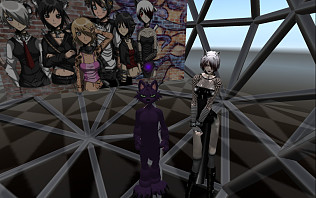Math in Second Life
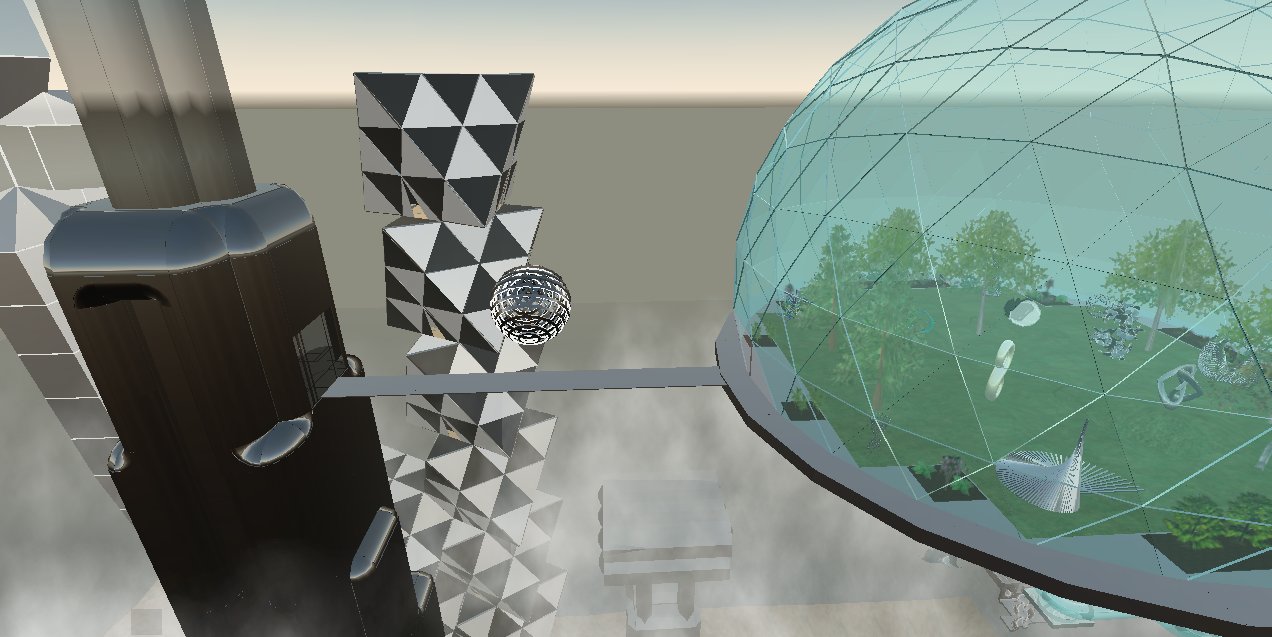
This sim built by Henry Segerman http://www.segerman.org/ (aka Seifert Surface).
The metal ball above the bridge is made of 4 nested spheres, rotating on different axes. Behind the sphere is a tower of octahedrons. (A octahedron is a regular solid, having 8 faces, each face is a equilateral triangle. (it's like two pyramids with their bases glued together)) On the right is a geodesic dome made of glass. Inside is a garden with mathematical sculptures.
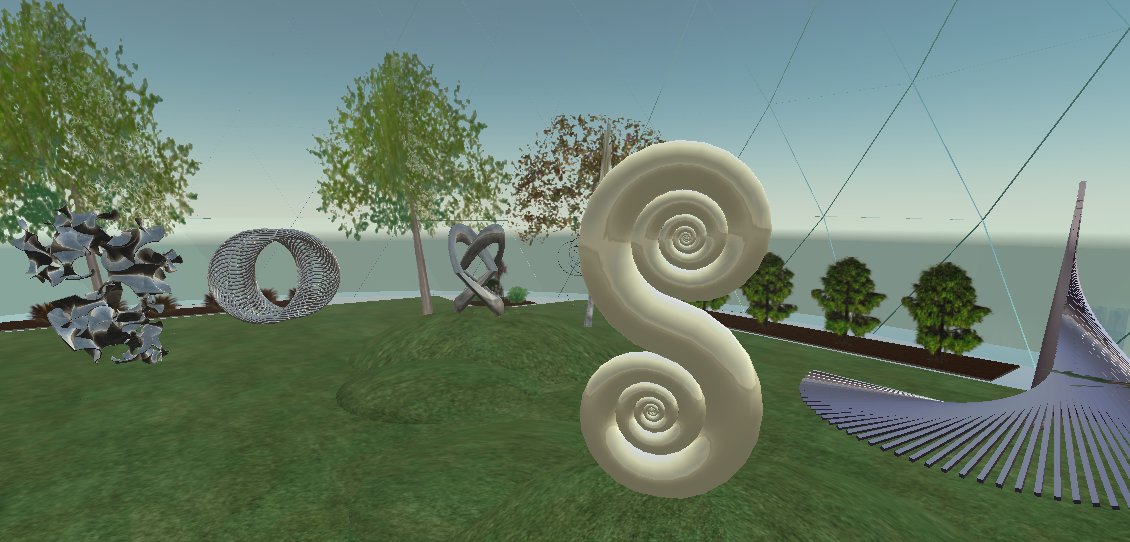
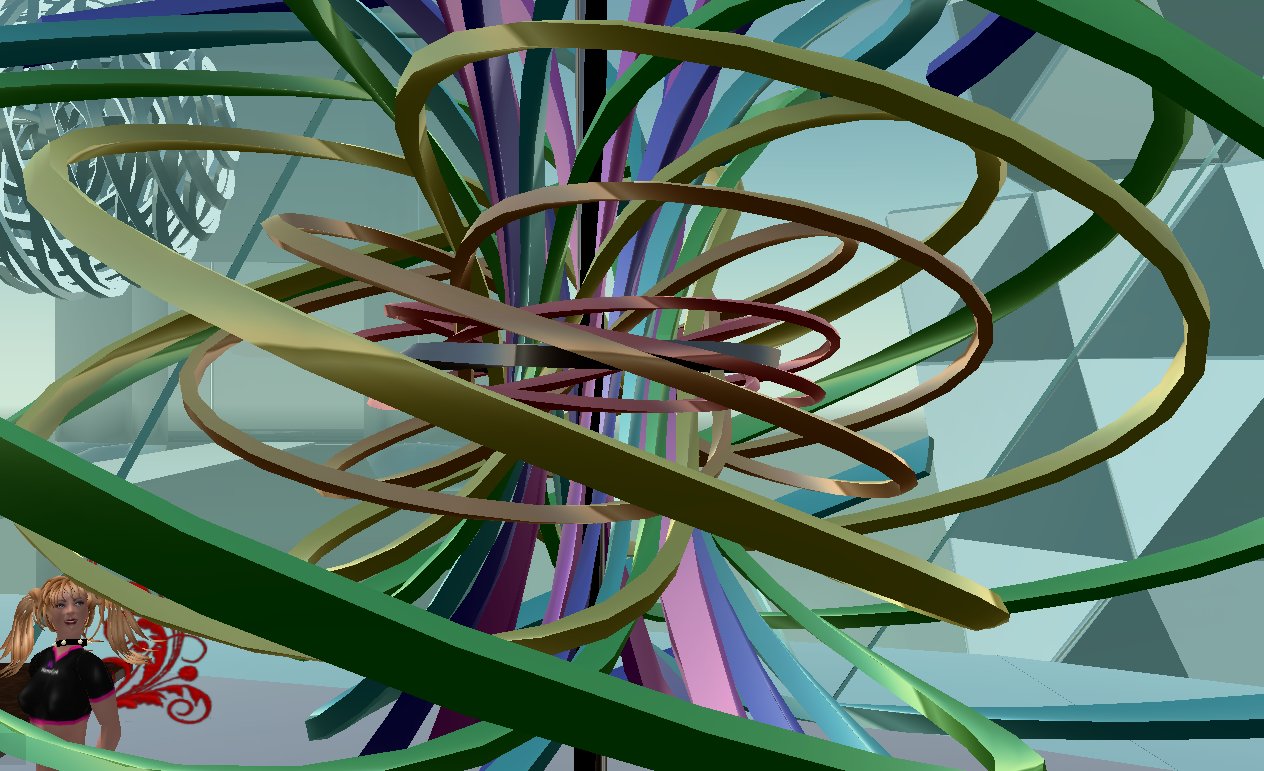
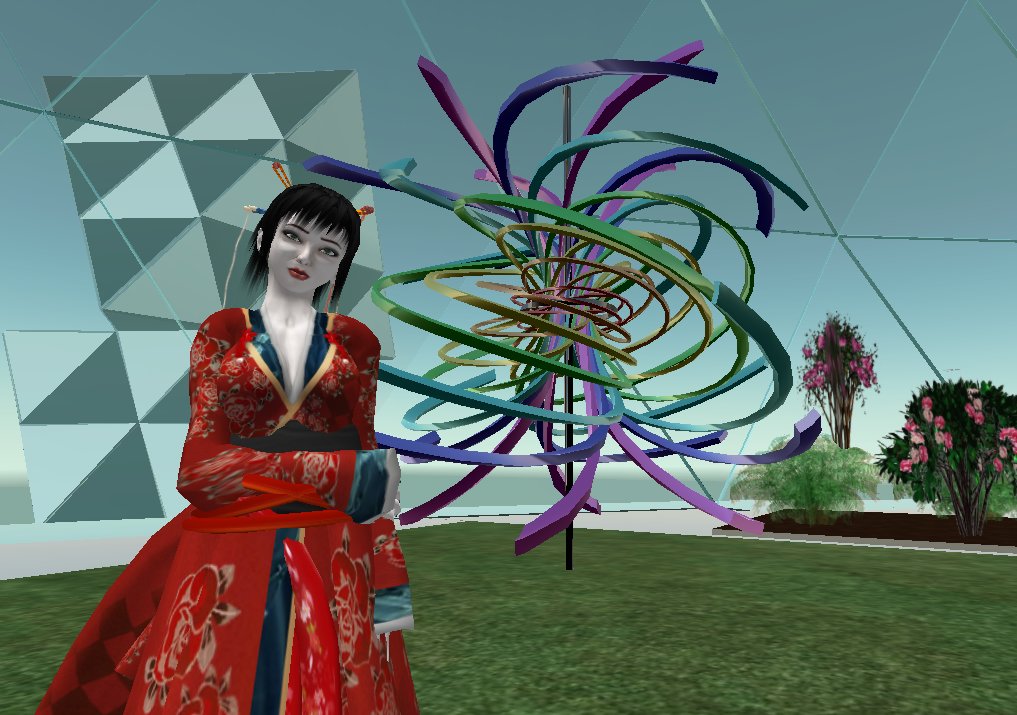
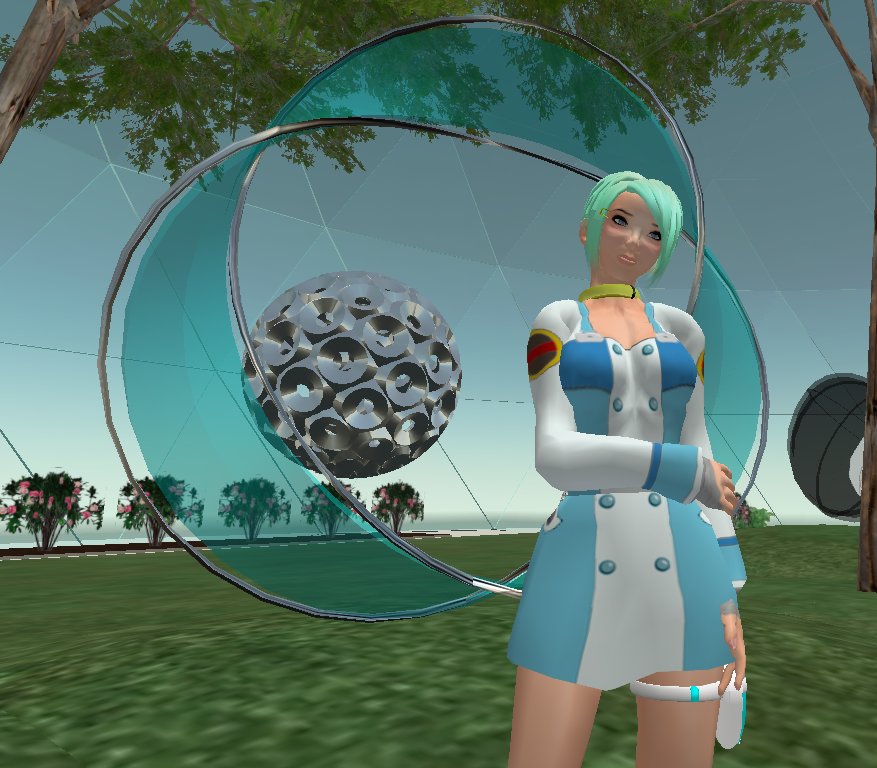
The background blueish strip is the Moebius strip. Moebius strip is a example of a surface that has only one side. (If you are a ant crawling on the strip, you'll end up on the other side without crossing any edge.) The rim of this strip, is a Trefoil knot. Tie a overhand knot, then connect the lose ends, and you have it!
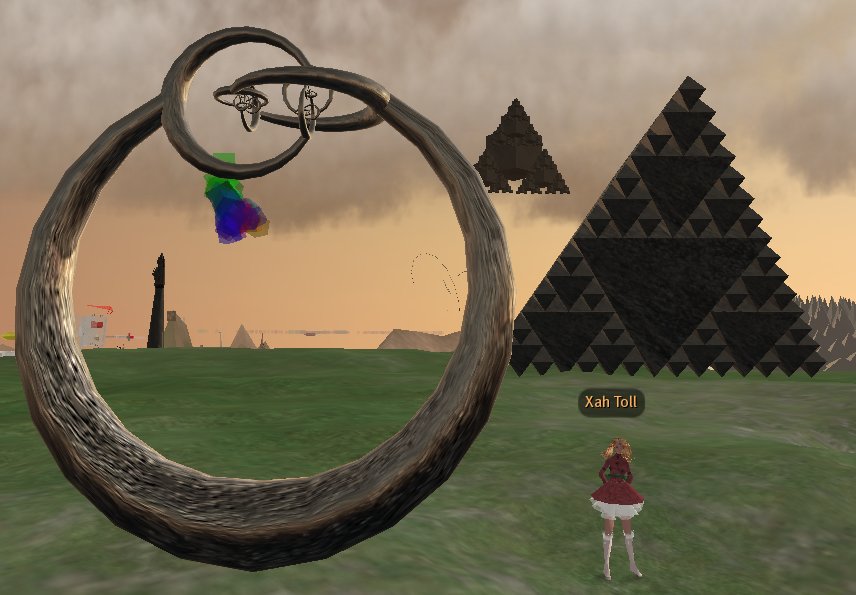
This shape is a fantastic discovery to mathematicians in 1924, in particular, of the branch topology. It is interesting because it is: “An Example of a Simply Connected Surface Bounding a Region which is not Simply Connected.”. Here's some basic explanation:
On a piece of paper, draw a simply connected closed curve (for example, a circle). Once you draw a circle, it divides the region into two sections: inside, and outside. A theorem says that this will always be so. (silly theorem, eh?) Furthermore, the two regions are similar in the sense that each is a rather coherent blob.
Now, if you have a sphere (aka ball) in space. This sphere also divides the 3D-space into two regions, the inner one, and the other one. Again, the inside region and outside region are similar in the sense that both are coherent blobs.
However, now consider this shape called “Alexander's Horned Sphere”. It divides the space into the inner region and outter region. However, the outer region is no longer a coherent blob, yet the inner region is still a un-pierced blob.
The above is a rough description on why it is interesting. To understand this exactly, a human animal needs to study math for about a decade. For a technical description, see: Alexander's horned sphere.
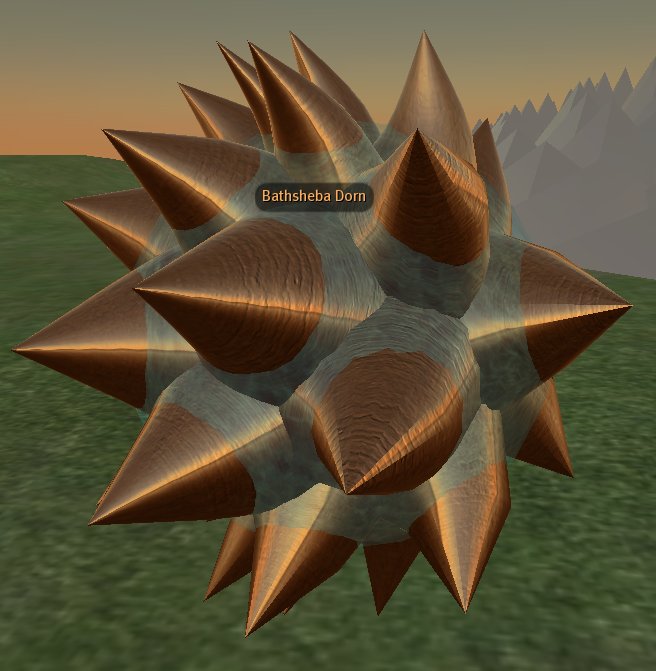
(This shape is not a stellated dodecahedron. Ask Seifert Surface or Bathsheba in-world if you want to know the detail)
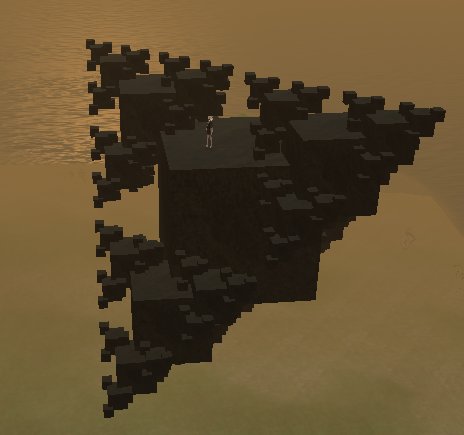
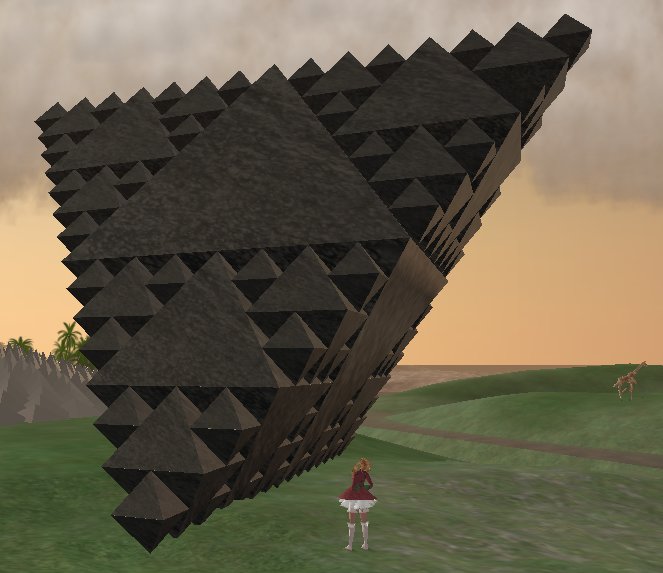
This technique of forming fractals is based on the Sierpinski triangle.

Unless otherwise indicated, the objects shown in this page are created by Henry Segerman http://www.segerman.org/ (aka Seifert Surface in Second Life).
Other Websites
- “Evaluating Second Life for the Collaborative Exploration of 3D Fractals”, Paul Bourke, Computers and Graphics, 2008-09.
http://local.wasp.uwa.edu.au/~pbourke/papers/cg2008/index.html - “Evaluating Second Life as a tool for collaborative scientific visualisation”, by Paul Bourke. Computer Games and Allied Technology. Singapore, April 28-30, 2008.
http://local.wasp.uwa.edu.au/~pbourke/papers/cgat08/index.html - “Menger Sponge in Second Life” (2008-02) by Paul Bourke.
http://local.wasp.uwa.edu.au/~pbourke/fractals/menger_sl/index.html
